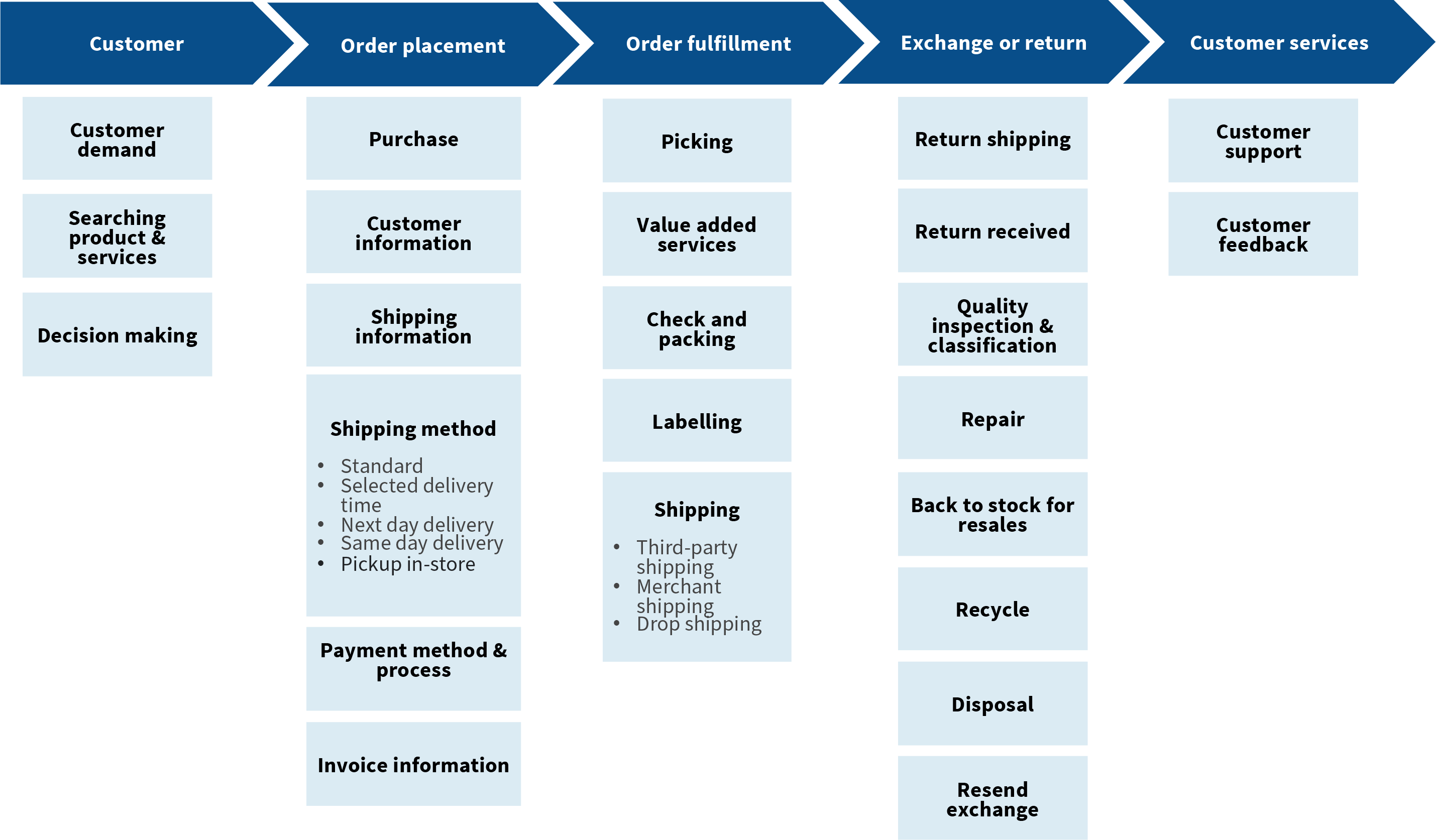How Modern e-Commerce Businesses can Optimize Supply Chain and Order Fulfillment to Enhance Customer Experience – Part 2
In part one of this blog series, we discussed how a business can optimize the supply chain process to provide a seamless customer experience. In this second part, we will look at the order fulfilment process and how to optimize it to enhance the customer experience. In today’s rapidly evolving word of e-commerce, mastering the art of order fulfilment is not just a business strategy but rather a cornerstone of an exceptional experience.
E-commerce order fulfillment flow

The e-commerce order fulfillment process kicks off right after the customer’s online order is placed. At the distribution or fulfillment center, the order will be processed to generate a picking list with details of the product and quantity required for the order. This activity can be done manually by warehouse workers or automatically for certain modern, large fulfillment centers.
There may be value-added services or customization before the items are packed, go through quality control, and get labelled for shipping. The last mile of delivery can be taken care of by the business or via a third-party logistics partner. Last but not least, reverse logistics is the final step in which the return shipment or request for exchange product will be handled.
Challenges in the order fulfillment process
Interestingly, the order fulfillment process for e-commerce customers is often more challenging than same process for wholesale customers. This is due to the large number of orders that need to be processed within a short time from different channels and locations. Any issue that arises in this process can make the shopping experience less delightful and result in customer churn and damage to the brand’s reputation.
Here are the top 5 pain points of e-commerce order fulfillment:
- Product out of stock:
When a product is out of stock either due to unavailability or a system error, it means two things for the business: a sales loss and an unhappy customer. Especially with today’s competitive market, stockout on popular or essential items can increase the risk of customer churn and diminished brand loyalty when customer tries to get the product from alternative sources.
The root causes for stockout situations vary from inaccurate forecasting, poor inventory management, inefficient and long lead time replenishment, or a defect in the order management system.
Solution:- Investing in an inventory management system to optimize your inventory level.
- Leverage real-time demand sensing technology to improve forecast accuracy and create safety stock to buffer the high demand for essential products.
- Create a back-order system and keep the customer informed on the status of the item’s availability.
- Delayed shipping and delivery:
90% of global shoppers expect two or three-day shipping as a standard. According to DHL, 65% of abandoned online shopping baskets are due to slow or expensive delivery. Today same day or next day delivery and fast shopping options have become more important as customers continue to expect faster and more convenient delivery service.
Solution:- Use predictive analytics to optimize delivery routes, reduce delivery times, improve delivery accuracy, forecast demand and optimize inventory levels.
- Collaborate with logistics partners to optimize delivery routes and reduce delivery lead times.
- Pro-actively keep your customers up to date with any delays and status of order.
- Incorrect orders or damaged product:
From the outbound handling and last mile of delivery to the produced received in the customer’s hands, many processes and people have been involved which can cause a wrong order or damaged products. However, these scenarios create an unpleasant shopping experience for the customer and put the business at risk of losing customers and bad reviews.
Solution:- Invest in warehouse process automation (barcode scanner, robots, augmented reality) and warehouse management system to minimize error from incorrect order handling.
- Optimize warehouse goods flow and provide training to on-ground personnel handling product packaging, quality control and shipping.
- Reverse logistics:
With the blooming of online shopping and increased market competition, customers demand a flexible, simple, and free return policy. Hence, the return and exchange process also have a major impact on the customer experience. However, this also increases the challenge for the business as this is one of the most manual and labor-intensive processes in the supply chain as it involves return shipment arrangement, quality inspection, repair, and re-register on warehouse management system to put back to stock.
Solution:- Invest in optimizing the reverse logistics process and system to handle efficiently the end-to-end reverse logistics including return or replacement request approval, status update, condition check, refund payment.
- Omnichannel orders monitoring:
The presence of omnichannel e-commerce where customers want to have a seamless and consistent experience across all channels and touch points including online and offline has made order monitoring across different channels and locations far more complex. Businesses are expected to provide flexible blended shipping options like buy online, pick up in store (BOPIS), buy online, return in store.
Solution:- Flexible deployment and fulfillment strategy which allows the stock pool to be shared and utilized across channel and location. For example, an online order can be fulfilled by the stock from the physical retail store instead of the distribution center.
Supply chain and order fulfillment are key processes for enhancing the e-commerce customer experience. From sourcing materials to delivering the final products at customers’ doorsteps, every single step is closely linked and has a direct impact on customer satisfaction and brand loyalty. Optimizing these processes based on best practices and leveraging the power of digital technology enables modern businesses to provide a seamless customer experience with transparent communication that builds trust.
Ultimately, investing time and resources to proactively tackle supply chain and order fulfillment challenges is imperative for any e-commerce business looking to thrive in today’s competitive marketplace.
References
Part 1
More from Linh Nguyen
In the ever-evolving world of e-commerce, success hinges on the ability to provide customers…
Have you ever wondered what happens after the customer clicks the purchase button completing…
Latest Blogs
The energy and anticipation were evident even before entering the arena, and attendees had…
A tectonic shift in wealth is underway, and agility is the key factor that will distinguish…
Educational institutions are at a crossroads where their future hinges on a single question:…
In times of market unpredictability, alternative investments offer a valuable advantage by…




